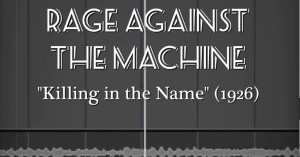In the latest episode of Now You See It, host Jack Nugent focuses on lateral character movement in films, explaining how the movement of left to right across the screen evokes a different emotional response than the converse of moving right to left.
What makes one side of the screen different from the other? Why does movement right to left matter? The answer comes from time and language in Western culture. Left to right indicates the progression of time. Our language reads from left to right, books begin from the left and finish once we get to the right. In video games players start on the left side and finish the level on the right. On any blind graph, time increases as we move right in our everyday life. Movement towards the right indicates time progress in normally and moving towards the left indicates moving back in time. Abnormalities and regression from this thinking came the theory amongst film scholars that people will interpret left to right movement as more natural and normal then right to left movement because of how our brains naturally process moving images.
While discussing the subject, Nugent referenced an academic study from the Cleveland State University School of Communication. The study gauged the reactions of real subjects and confirmed many of these theories. Film guru Roger Ebert also wrote about lateral movement in his 2008 article “How to Read a Movie“, but was only able to speculate about the effects.
To reduce the concept to a crude rule of thumb in the composition of a shot in a movie: A person located somewhat to the right of center will seem ideally placed. A person to the right of that position will seem more positive; to the left, more negative. A centered person will seem objectified, like a mug shot. I call that position somewhat to the right of center the “strong axis.” Now what do I mean by “positive” or “negative?” I mean that these are tendencies within the composition. They are not absolutes. But in general terms, in a two-shot, the person on the right will “seem” dominant over the person on the left.






